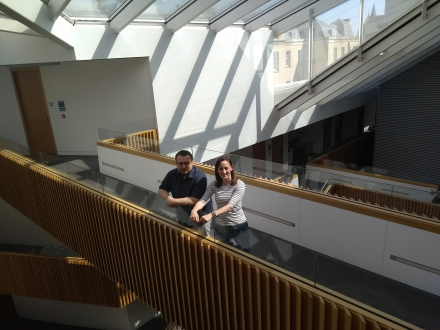
Chaos Kept at Bay is also Ill People’s Hope
If disease is chaos, the mathematical methods of resolving irregular processes within the body support the healing process. Two mathematicians of the Bolyai Institute, University of Szeged (SZTE) are able to tame chaos.
“Some behaviours determined by simple rules, which nevertheless appear to be complex, irregular and random may occur in many areas, such as in the atmosphere, in the flow of liquids, but even in the movements of certain heavenly bodies as well as in our bodies: a behaviour that we call chaotic dynamics. A more thorough understanding of chaos has been the subject of intensive mathematical research since the second half of the last century,” started his explanation Gergely Röst, mathematician.
Gergely Röst, an associate professor at the Bolyai Institute, Faculty of Science and Informatics, University of Szeged, who currently works at Oxford University, researches interdisciplinary life and health sciences based on mathematical methods. He published an article with Gábor Kiss, his colleague from Szeged, who returned from Bristol University in 2014, in an interdisciplinary journal Chaos in the beginning of 2018, which answers the question of how chaos can be kept at bay.
“The Mackey-Glass equation presented in 1977 is used for the mathematical description of physiological regulatory processes, which also reveals the chaotic behaviour behind various bodily abnormalities. Various variants of the equation have successfully been used for different purposes, among others to better understand and treat various types of abnormalities of the hematopoietic system, the cardiovascular system and the nervous system. This is one of the key elements of more complex models in several cases,” explains Gergely Röst.

In many cases, chaotic behaviour is undesirable, so it is important to understand ways to tame the chaos. The gist of the Röst-Kiss idea is to force all solutions into a special domain of the phase space where chaotic behaviour cannot occur. This way, they have succeeded in transforming chaotic behaviour into regular periodic motion or equilibrium with several different mechanisms.
“If the parameters that cause irregularities are changed in the right way, the whole system can be made regular. This can also help us understand and treat abnormal changes in the body,” describes Gábor Kiss the practical importance of the mathematical method.
Text: Ilona Újszászi
Photo: SZEM




 Olney Rodrigues -
Olney Rodrigues - 


